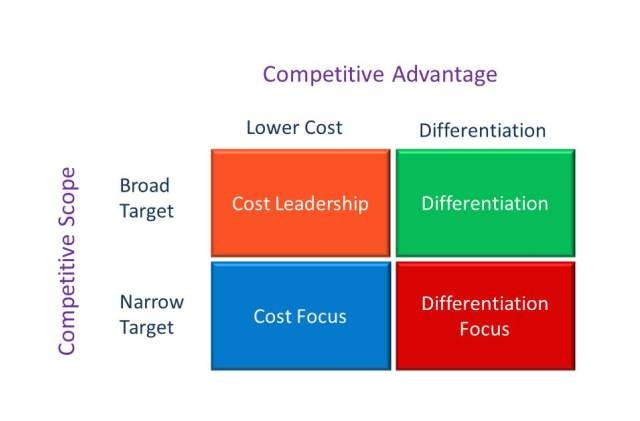There Are Still Only Two Ways to Compete

The attached article by Professor Roger Martin of Rotman School of Management (who co-authored Playing to Win: How Strategy Really Works with P&G’s A. G. Lafley) is a must read.
In the article, Professor Martin highlights that there are still only two ways to compete:
- Cost Leadership. The founder of the Boston Consultancy Group, Bruce Henderson, propounded in the 1960s that relatively low cost of operations is a very powerful strategic advantage. Lower costs can lead to lower prices, which can lead to increased market share, which can lead to increased profitability and market dominance. According to him, the most effective business strategy was one of striving for market dominance in this way.
- Differentiation. Harvard strategy guru, Michael Porter, pointed out in 1980 that there was another way to compete – differentiation. Porter highlighted these two strategies in his Generic Strategies Model (covered in detail in BlueBarn tutorials).
Professor Martin argues that even today, 35 years after Porter’s model, cost leadership and differentiation are the only ways to compete. In that time, the following things have changed:
- Increased ferocity in competition. Players following these two strategies are now attacked quicker and more fiercely than in the past.
- Faster and cheaper scaling up of ‘two-sided’ markets. Thanks to the internet, eBay, match.com, Uber and others brands/companies have come up. But such two-sided markets existed in the past as well.
- The rise of the ‘Ecosystem’. Today, firms are finding that their competitive advantage comes from collaboration with other firms and individuals rather than solely through their own efforts. This allows them to build their own ‘ecosystems’. However, the ecosystem concept is not new – the Japanese have had the keiretsu for long; more importantly, the competitive advantage that such companies (like Apple) obtain from building their ecosystems either enables their differentiation or generates a cost advantage.
Yes, in today’s hyper-competitive scenario, competitive advantage has become somewhat frayed. But what is inescapable is that given this, the only two ways to compete effectively are still cost leadership and differentiation. Bear that in mind.
You can read Professor Martin’s excellent article here.
Visual courtesy: https://www.flickr.com/photos/victornuno/

